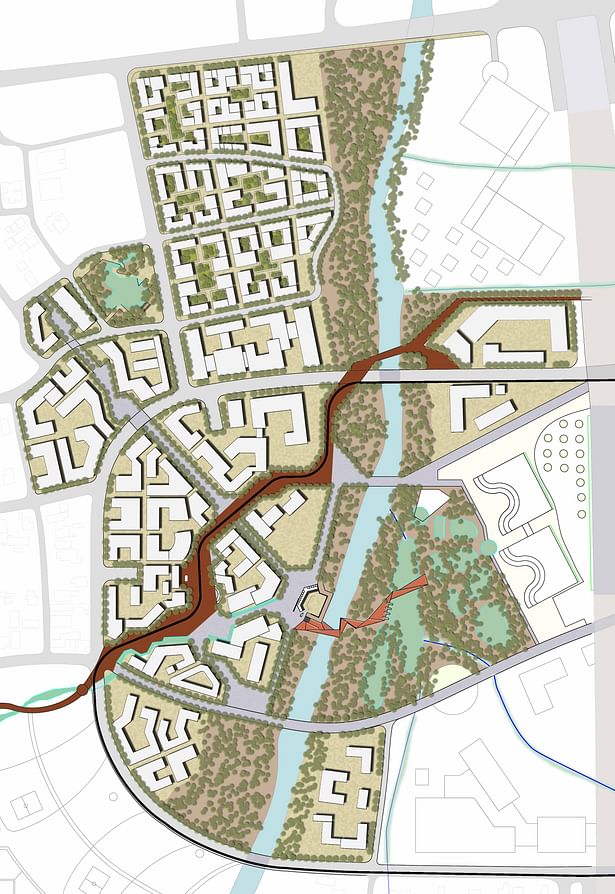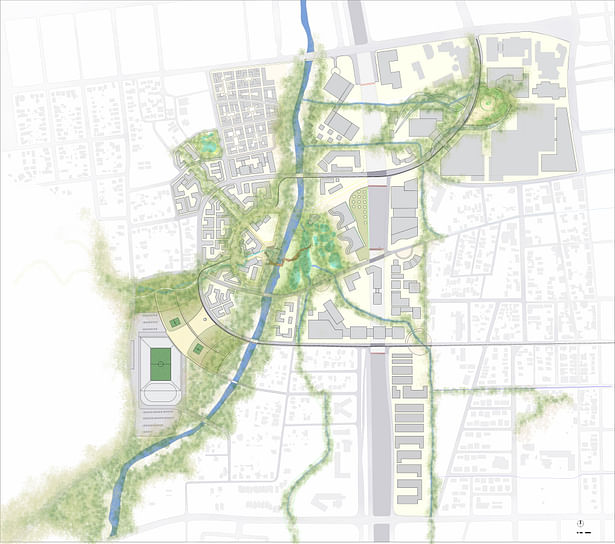
The concept of the green finger, a vast network of green space, was developed as a means of connecting Tucson’s natural amenity, A Mountain, to the man-made downtown area. The network of green space strengthens the idea of the “dog bone” by creating a link between the major nodes, A Mountain and downtown. The green finger presents an opportunity to introduce new, mixed-use urban development between the nodes, while also providing an urban trail system that weaves across a revitalized Santa Cruz River and through the barriers of I-10. The master plan proposes a significant change in land use within the site, restoring natural systems, while also providing space for mixed-use development. The plan proposed taking what is currently a brownfield and transforming it into active, public spaces by introducing a soccer stadium, a variety of residential units, and a lively village center. Reintroducing water into the Santa Cruz River and day lighting the surrounding washes creates an amenity for users, while celebrating what was once lost. Using the concept of the green finger as an organizing principle, intersections are formed between natural and man-made systems, historical and new developments, various modes of transportation, and social activities.
Status: School Project
Location: Tucson, AZ, US
My Role: responsible for site analysis, concept development, final plan and detail design for villeage center and mixed-use residential area

